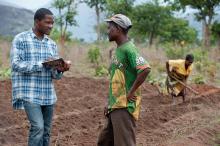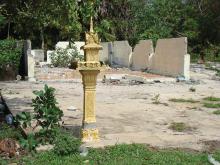Land Library
Welcome to the Land Portal Library. Explore our vast collection of open-access resources (over 74,000) including reports, journal articles, research papers, peer-reviewed publications, legal documents, videos and much more.
/ library resources
Showing items 1 through 9 of 143.This paper focuses on the application of the concept of Integrated Water Resources Management (IWRM) in Tanzania.
It is widely accepted among economists and policy-makers that secure and well-defined land property rights are integral to poverty alleviation and economic prosperity. But how do legal systems, land tenure and economic development really relate to one another?
Access to land is key to achieving food security, poverty alleviation, social equity and environmental protection. A brief insight in land governance-related principles and policies of the German development assistance.
Following the end of apartheid, South Africa’s government set itself ambitious goals with a planned land reform. However, there have since been barely any changes in the country’s agricultural structure, and the positive impacts that were hoped for on rural livelihoods have hardly materialised.
The land reform process in Cambodia is full of examples of injustice and human rights violations. Promises to improve the situation of the landless and land-poor citizens have remained unfulfilled. Development co-operation efforts have not changed this either.
A project in Burkina Faso has given a clear demonstration of what supporting family farms can achieve in terms of poverty alleviation and rural development. One important success factor was the transfer of land to farmers, accompanied by a secure land-tenure policy adapted to their needs.
Semi-nomadic pastoralism was replaced by sedentary pastoralism in Inner Mongolia during the 1960's in response to changes in land use policy and increasing human population.
Among the world’s continents, Africa has the highest incidence of food insecurity and poverty and the highest rates of population growth. Yet Africa also has the most arable land, the lowest crop yields, and by far the most plentiful land resources relative to energy demand.
Dryland areas cover about 41 % of the Earth’s surface and sustain over 2 billion inhabitants. Soil carbon (C) in dryland areas is of crucial importance to maintain soil quality and productivity and a range of ecosystem services.






